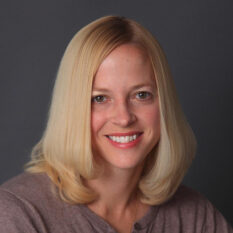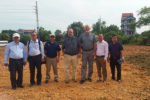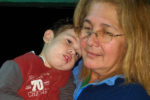 |
A look back at God’s grace on more than 60 years of WELS mission work in Latin America.
As a church body, WELS has been carrying out mission efforts in Latin America for decades, dating back to the 1960s in places like Mexico and Puerto Rico. During the first years, missionaries spent time learning about the culture and trying different strategies to share the gospel. One ongoing issue challenging ministry was a lack of awareness about Lutherans.
“For many years, we operated as a tiny group that was completely unknown to the large Latin American population,” recalls Michael Hartman, who served as a missionary in Latin America from 1999 to 2022. “Historically, Spanish-speaking Latin American countries have had the least number of Lutherans in the world.” For instance, there are more Buddhists than Lutherans in Mexico.
Challenges in the region also included long distances between missionary teams and fluctuating security risks. With his guiding hand, God provided solutions and blessed ministry efforts over the years. Today mission work is carried out in each country in Latin America through Academia Cristo. “More than one million people have started studying with us,” says Andrew Johnston, team leader of the One Latin America Mission Team. “People become students who become leaders who plant groups that become congregations.”
Early work

“My first exposure to Latin American missions occurred in the early 1970s when the chairman of the World Missions Executive Committee for Latin American Missions, Pastor Harold Essmann, told seminary students about the survey for starting a new mission field in South America,” recalls Missionary Paul Hartman, who served Latin America from 1977 through 2000. “Missionaries Rupert Eggert and Ernest Zimdars, who were then living in El Paso, Texas, and were serving respectively the church in Mexico and a Hispanic mission in El Paso, traveled throughout South America and recommended Medellín, Colombia.”
As a result, a missionary team settled in Medellín in 1974 to begin outreach efforts there. “Each of the missionaries had an area of town, called a barrio,” explains Larry Schlomer Sr., who served as a missionary in Colombia from 1977 to 1983 and went on to serve in additional locations for World Missions until 2014. Bible classes and other ministry activities began in these sections, and soon small groups gathered regularly.
After some time, with so many small worship locations scattered around the barrios of Medellín, the idea to have a downtown church surfaced. “The members were asking for it,” Schlomer explains. “Each of the little groups we had was a little small and anxious for more fellowship. We decided to start worshiping downtown at their request—we rented a hotel room on Saturdays to start.” A big advantage of this new location was that it was in the center of Medellín, and all the buses with routes to the barrios came through downtown. “Everyone could get to church for the cost of only one bus ride,” Schlomer says.
Improving communication
Besides starting work in Colombia, WELS continued to develop its outreach in other parts of Latin America. In 1977, Paul Hartman was called to serve in Puerto Rico. “By then the missionaries had been serving in Puerto Rico for more than ten years,” he says. “I worked alongside Ralph Martens and Charles Flunker—excellent men—for five years. Our goal was to grow the church in Barrancas (a small sugar cane worker community on the south shore of the island near Guayama) and plant a church in Dorado (a neighborhood in Guayama) and another church in Humacao (a city on the East Coast).” The missionaries offered Bible studies in homes and gathered people for worship in a church building in Barrancas and other rented locations.
“Congregations were growing and members were taking on responsibilities, but the work required lots of patience and persistence,” Paul Hartman explains. “Leading people to Christ and to growing in Christ through Bible study was our central activity.”
Another missionary team that was located in El Paso, Texas, served a Hispanic church in El Paso and ministry efforts in Mexico. This made three missionary teams—one in Puerto Rico, one in Colombia, and a third in El Paso.
During these years, missionaries were spread out and worked to train national workers, often in isolated settings. “Teamwork was emphasized but inhibited by geography,” Paul Hartman says. “The missionary teams were separated by thousands of miles in a time when communication occurred by travel and mail. The team in El Paso served pastors and churches in Mexico separated by hundreds of miles.” When missionary teams did gather in person, they found overlaps, such as translating the same material.
To reach more and to centralize efforts, an idea developed to produce mass communication materials. This led to the publication of Mensajero Luterano (Lutheran Messenger), a newsletter that was created and then distributed to different parts of the Spanish-speaking world. Mensajero Luterano served several objectives. “It gave us experience in producing acceptable Spanish text, learning the needs of an audience, and working with nationals to produce materials,” says Paul Hartman.
Adapting to changes
During the time that the Schlomers and other missionary families lived in Colombia, security became a growing concern due to a three-front war among the government of Colombia, paramilitary groups, and guerilla groups. “When we first arrived, we would travel from Medellín to the coast of Colombia on occasion for vacations, but later, people did not take those routes anymore, as it was too dangerous,” Schlomer recalls. “We saw and heard about increasing levels of violence. By the time we left, I had 20 friends that had been murdered.” Yet, Schlomer also notes that God protected their family during their time in the country.
As missionaries departed, the members of the church felt a sense of urgency for evangelism. Tonny Quintero, the last student that Schlomer confirmed before leaving in 1983, brought his friend Henry Herrera to church. Both went on to study for the ministry and became leaders and pastors of the growing congregation. Their ministry continues today, with Colombia recently celebrating 50 years of ministry work.
During the years that followed, missionaries continued efforts to serve countries in Latin America where it was deemed safe. “When I arrived in Mexico in 1999, I was one of 17 WELS missionaries to Latin America,” Missionary Michael Hartman recalls. The missionaries served six countries throughout the region: Brazil, Colombia, Cuba, Dominican Republic, Mexico, and Puerto Rico. In 2003, the Latin American Traveling Theological Educators (LATTE) team was formed. This group of missionaries served as a traveling seminary, going between Spanish-speaking Latin American missions to train nationals for the ministry.
But over the next years, and especially as the Great Recession of 2007–2009 hit, financial difficulties impacted missionary positions. Says Michael Hartman, “By December 2013, I was one of five missionaries in Latin America.”
Becoming a known entity
Due to being spread out over such a large region of the world, one of the struggles the remaining missionaries faced was to get the word out in both senses: to reach more with the Word of God and to raise awareness about the Lutheran church.
In addition, security issues continued to affect the mission field. “Missionaries were moved out of places in Colombia and Mexico for reasons related to violence resulting from drug conflicts and wars,” reflects Michael Hartman.
In 2013, a meeting was held to evaluate the situation and look at the next steps for Latin America. “We identified key issues, including that there had been lots of hard, faithful mission work done in Latin America and we had a few spots where strong ministry was being carried out,” Michael Hartman says. “We were limited regarding what we could do as a result of low manpower. The biggest problem was that hardly anyone knew who we were [in Latin America]. Also, we needed to develop a ministry that wasn’t dependent on physical missionary locations.”
Two months later, as leader of the Latin America missionary team, Michael Hartman pitched an idea to overcome these challenges and reach more people: a website that would provide free Christian Spanish-language resources and courses. “At a meeting in 2014, three men—Juan Garcia, Pastor Gonzalo Delgadillo, and Ernie Latorre—helped name it Academia Cristo and came up with the tagline of ‘Aqui tu Paz’ (Your peace here),” he says.
Academia Cristo was developed using the hourglass principle, a philosophy that works to first reach as many people as possible and make a connection. “We share the gospel message with a wide audience. This is the top of the hourglass,” explains Michael Hartman. “After reaching a large number, we train a few leaders who rise out of that and ask to learn more. This is the middle of the hourglass. Those individuals can then share the gospel with many, which is the bottom of the hourglass.”
By the end of February 2015, the Academia Cristo website was launched and heavily promoted through Facebook. By April 2016, Academia Cristo was offering its first online Bible class. “When we started, we had over one thousand people sign up for the online course,” Michael Hartman says. “Maybe one hundred people or so showed up for the first class; two people completed the course.”
But numbers consistently grew, and now ten years after it started, Academia Cristo, through its self-led and live courses, has students throughout Latin America and is also reaching those who speak Spanish in the United States. “Our missionaries focus on online instruction in live classes and on-the-ground visits to those students who are applying what they have learned by gathering people around the Word of God in their communities,” Johnston says.
In 2021, a new Latin American synod called Iglesia Cristo WELS Internacional was formed through the partnership of WELS sister churches across five countries throughout Latin America. This new synod “bridges our former work with our current work,” Johnston says. “Those who graduate from Academia Cristo go on to study in its seminary program. Once they have matured, groups planted by Academia Cristo students become congregations of that synod.” Of the current 35 church plants, 1 already has become an official congregation in this new synod; 5 more are in the process of applying for official status.
“Back in 2003, when we formed LATTE, we shared a dream that by 2020, we would have a presence in every country of Latin America,” Schlomer recalls. God blessed ministry efforts, and Academia Cristo gained a following throughout the region. As 2020 approached, “I realized we did have a presence in every country,” Schlomer continues. “The dream had come true.”

*Anyone who speaks Spanish can take Academia Cristo courses. Reach out to Missionary Andrew Johnston at 305-548-9255 or visit academiacristo.com.
Learn more about WELS World Missions’ work in the October 2024 WELS Connection.
Featured image at top pictures Henry Isidro Chonillo (far left), an Academia Cristo student and church planter in Ecuador, who is gathering groups to study God’s Word.
Author: Rachel Hartman
Volume 111, Number 10
Issue: October 2024

Diary of a missionary’s wife
Missionary Ronald Baerbock and his wife, Karen, spent more than 17 years serving in various Latin American fields. Karen, who passed away in 2023, recorded ministry and family activities faithfully in her daily diary. Here are some of her entries:
GUADALAJARA, MEXICO (1987 FOR LANGUAGE STUDY)
9/1987—“When we go by bus to language study at the university in the morning, our little 2-year-old is cared for by Liz, a Mexican lady, who speaks only Spanish. Within 6 weeks, Joshua is talking in his sleep in Spanish.”
PUERTO RICO (1987–1993)
9/19/1989—“Hurricane Hugo has hit. Our power will be out for days. The yard is full of fallen trees.”
12/1992—“We went caroling.”
DOMINICAN REPUBLIC (1993–2000)
1993—“My first Sunday school classes were on the sandy edges of a boxing ring—our first church site.”
MISSION TO THE CHILDREN, SONORA, MEXICO (2005–2010)
10/5/2007—“Baked a big coffee cake for our visitors. Taught kids’ Bible class: 41 in San Manuel, 43 in La Sangre, 12 in San Jose. More classes in villages on the 6th with 61 more kids.”
MAHAHUAL, COSTA MAYA, MEXICO (2015)
2/21/2015—“Had 10 kids in my class today—good group. Ron tells the story to the whole group, then I take the 6 years and younger group and he has the older ones. I review the story, sing and color, or do a simple project. They get juice and plain cookies afterwards. Many of the kids have no school, so I have been teaching them to read Spanish.”
Read more of Karen’s diary entries.





